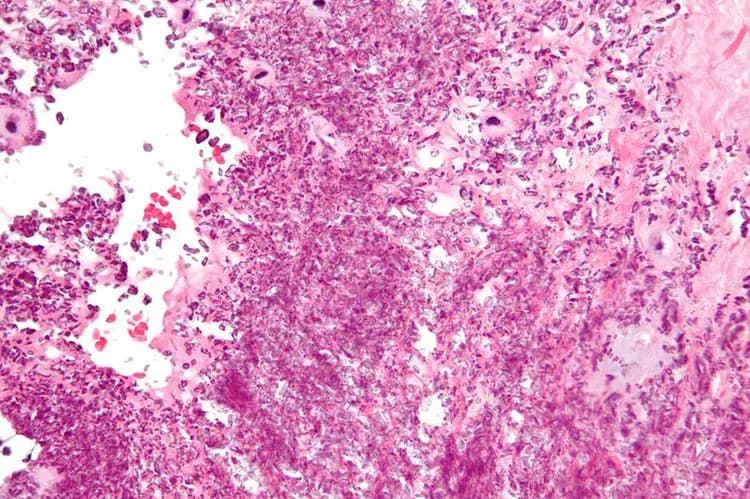What are the other Names for this Condition? (Also known as/Synonyms)
- Chondrocalcinosis Articularis
- Chondrocalcinosis due to Pyrophosphate Crystals
- CPDD (Calcium Pyrophosphate Deposition)
What is Pseudogout? (Definition/Background Information)
- Pseudogout is a medical disorder affecting the joints. Since the joints are affected, it could lead to arthritic attacks, and is termed as a type of arthritis
- It is characterized by the formation of crystals at the joints, by a salt called calcium pyrophosphate dihydrate
- This deposition of salt causes a painful swelling in the joints (knees, wrists, and ankles)
- The term ‘Pseudogout’ and the symptoms of the condition, indicates its similarity to Gout (a condition caused by the accumulation of uric acid at the joints). Hence, it is also sometimes misdiagnosed
Who gets Pseudogout? (Age and Sex Distribution)
- Both men and women are affected by Pseudogout
- Middle-aged individuals usually get Pseudogout; the risk increasing with an advancing age
- All racial and ethnic groups are equally predisposed to the condition
What are the Risk Factors for Pseudogout? (Predisposing Factors)
The risk factors for Pseudogout include:
- Older adults have an increased risk; the risk increases with age
- Serious injuries to a joint, may cause Pseudogout at a later stage
- Individuals having excess minerals, such as calcium or iron in blood, or less of magnesium, are also more prone to Pseudogout attack
- Some individuals are genetically predisposed to get Pseudogout, even at a younger age. The condition may run in some families
- Younger individuals with conditions, such as parathyroid disease, thyroid disease, acromegaly, Wilson disease, hemochromatosis, ochronosis, etc., are also at risk
It is important to note that having a risk factor does not mean that one will get the condition. A risk factor increases ones chances of getting a condition compared to an individual without the risk factors. Some risk factors are more important than others.
Also, not having a risk factor does not mean that an individual will not get the condition. It is always important to discuss the effect of risk factors with your healthcare provider.
What are the Causes of Pseudogout? (Etiology)
- Formation of calcium pyrophosphate dihydrate salt crystals at the joints causes Pseudogout. An advancing age increases the crystal quantity
- All individuals with such crystal deposits do not develop Pseudogout
What are the Signs and Symptoms of Pseudogout?
The signs and symptoms of Pseudogout include:
- Signs and symptoms similar to other joint disorders like osteoarthritis and rheumatoid arthritis are seen
- Pain and swelling of the joints due to fluid build-up (mostly the knees are affected)
- The pain can be sudden and excruciatingly unbearable, and the joints may be warm to touch
- Not all individuals with Pseudogout exhibit symptoms
How is Pseudogout Diagnosed?
A diagnosis of Pseudogout is made by:
- A thorough physical examination with medical history
- Analysis of joint fluid for the crystals: Samples taken from the affected joints show the presence of calcium pyrophosphate crystals
- X-rays of the joints may reveal calcium deposits and the extent of joint damage
- Blood tests indicate mineral imbalances, and other thyroid/parathyroid abnormalities; all of which are associated with Pseudogout
Many clinical conditions may have similar signs and symptoms. Your healthcare provider may perform additional tests to rule out other clinical conditions to arrive at a definitive diagnosis.
What are the possible Complications of Pseudogout?
A lack of proper treatment of Pseudogout could lead to permanent joint damage.
How is Pseudogout Treated?
Pseudogout cannot be completely cured. The treatment (medication) is generally aimed at reducing the pain, preventing repeated attacks, and improving the joint function. The measures include:
- Drugs (NSAIDs) are used to control pain. However, these have to be used with physician’s recommendation only, since they can cause side effects such as kidney and gastric problems
- In some cases, the accumulated joint fluids are removed by using a needle; thus relieving the pressure. After this, medications to numb pain and corticosteroids to reduce swelling, are injected into the joint
- Passive measures like placing an ice pack and providing plenty of rest (to the affected joint), help reduce inflammation and pain
How can Pseudogout be Prevented?
- Prevention of Pseudogout is difficult or impossible, especially for high risk individuals. But, the onset of symptoms can be delayed
- Modifications to lifestyle and proper dietary choices can influence the condition positively
- Be proactive and take care of the risk factors linked to Pseudogout, such as hormonal and mineral imbalances, thyroid conditions, and other such disorders
- Any pain and inflammation of the joints have to be always treated, at a very early stage
What is the Prognosis of Pseudogout? (Outcomes/Resolutions)
- If Pseudogout is treated appropriately, then individuals can lead a normal life
- Treating mineral imbalances and hormonal conditions early, may prevent further aggravation of the disorder
Additional and Relevant Useful Information for Pseudogout:
The American College of Rheumatology has replaced the term Pseudogout, with 'Calcium Pyrophosphate Deposition (CPPD)', as the appropriate name for the condition.
Related Articles
Test Your Knowledge
Asked by users
Related Centers
Related Specialties
Related Physicians
Related Procedures
Related Resources
Join DoveHubs
and connect with fellow professionals


0 Comments
Please log in to post a comment.